Chemistry and Chemists № 2 2024
Journal of Chemists-Enthusiasts
| Content | Chemistry experiments - video | Physics experiments - video | Home Page - Chemistry and Chemists |
|
Chemistry and Chemists № 2 2024 Journal of Chemists-Enthusiasts |
Iron in tap water - parts 1, 2 Volodymyr M. Viter |
|
Having noticed a mistake in the text, allocate it and press Ctrl-Enter
Observation of ferrous iron oxidation - part 1
A colleague has told me many times what the tap water at the institute is like. It flows from the tap almost colourless, but it becomes cloudy and brown when standing. The tap water seems to contain ferrous iron salts, which are oxidized by atmospheric oxygen when the water is stored in bottles. As a result, brown particles of iron (III) hydroxide are formed. The colleague uses this water to brew tea, but before doing this, he lets it stay for several days so that the iron (III) hydroxide precipitate settles to the bottom. Over time, the brown particles precipitate to the bottom (or stick to the walls), and the water becomes cleaner.
Железо в водопроводной воде Наблюдение за окислением двухвалентного железа - часть 1 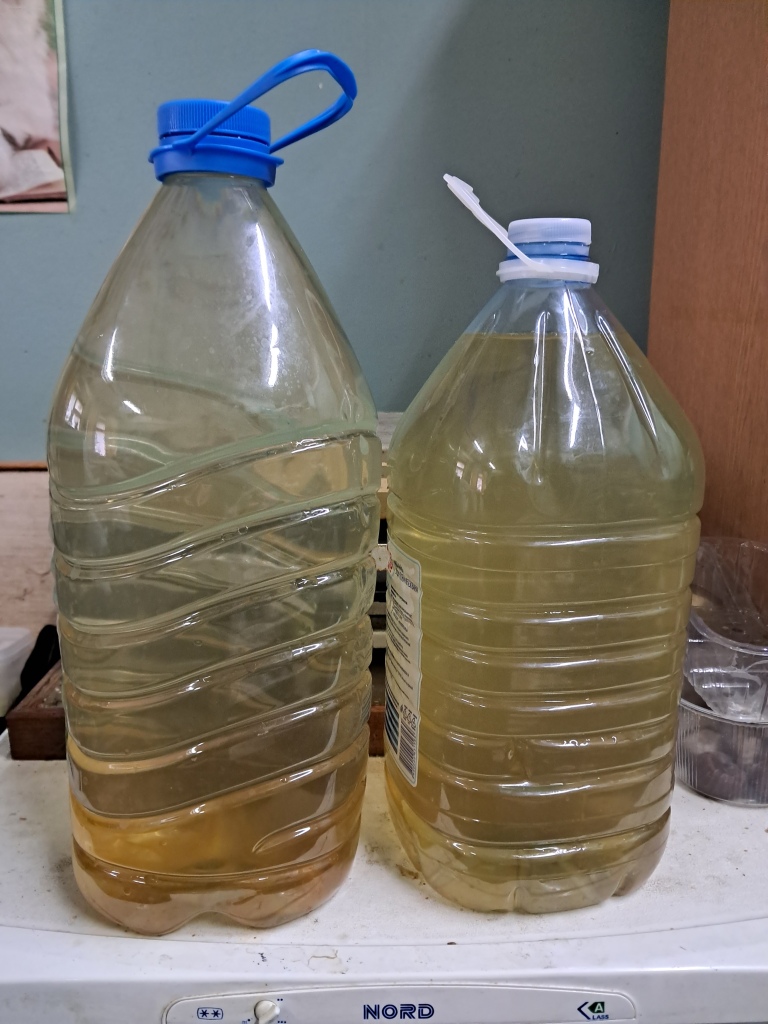 In my laboratory, I used to brew tea using distilled water for a long time. Now, this is impossible, so I decided to do the same as my colleague: put tap water in a 6-litre bottle and let it sit for several days so that the dissolved iron oxidizes and precipitates to the bottom as Fe(OH)3. At first, the water was almost colourless, but the next day I was unpleasantly surprised: the contents of the bottle turned brown and cloudy (suspension of iron (III) hydroxide). Over time, this suspension settled, but very slowly. 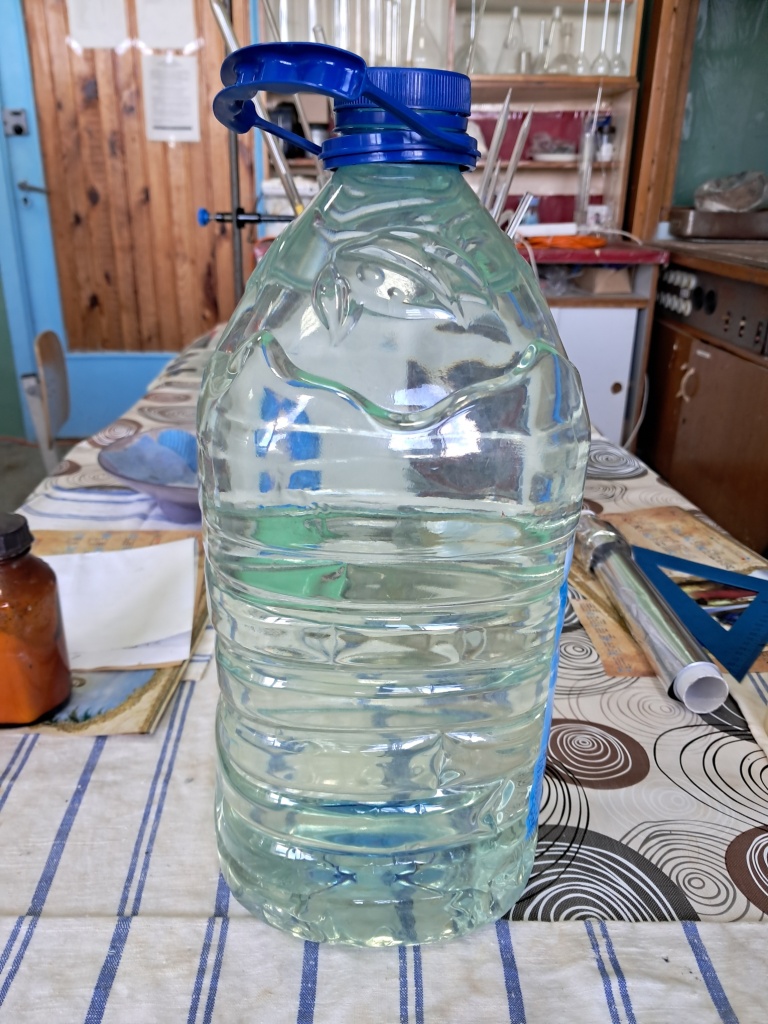 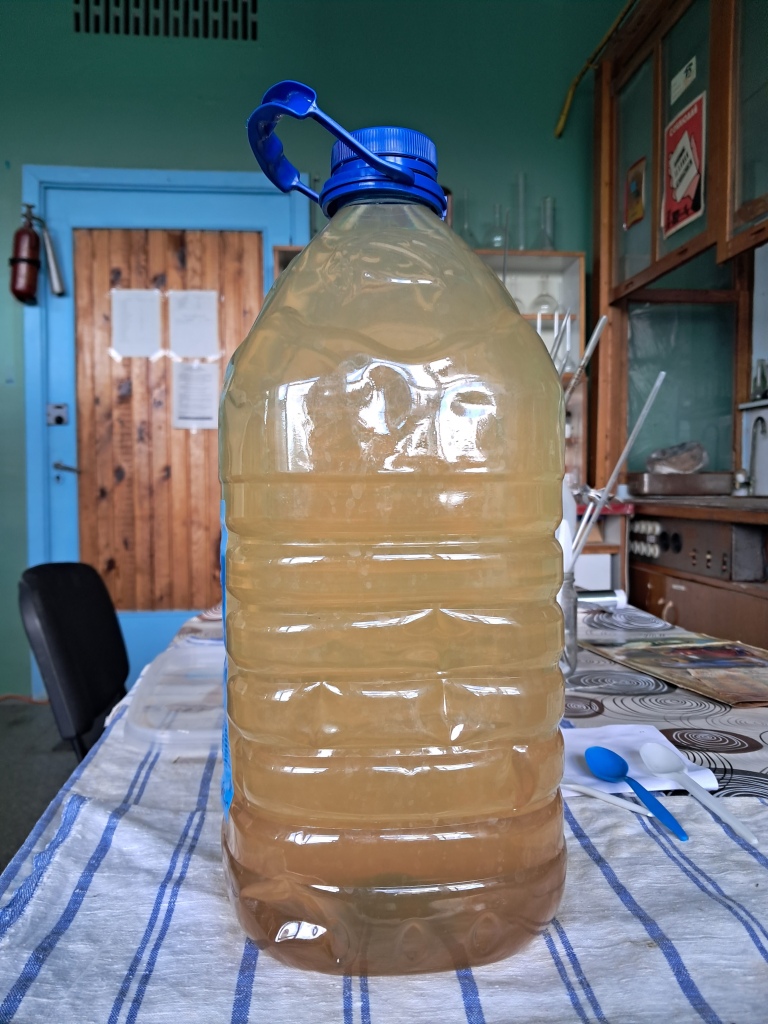 The next day, the water in the bottle remained brown and cloudy. I poured tap water into another 6-litre bottle hoping to photograph the iron oxidation process in full detail. 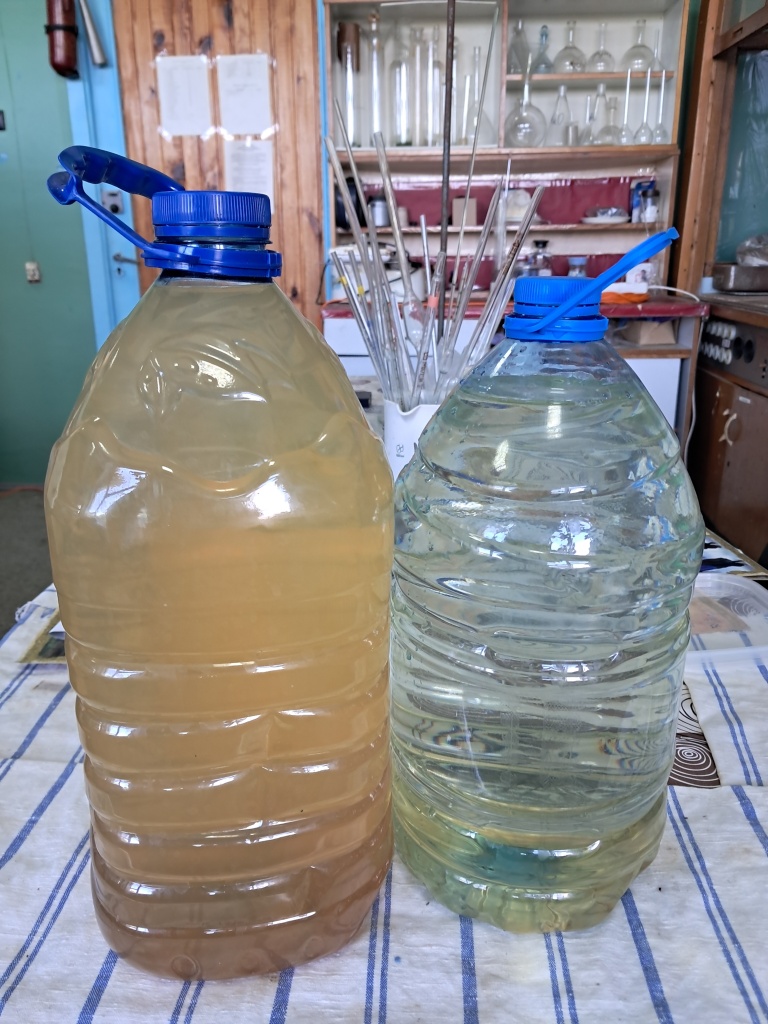  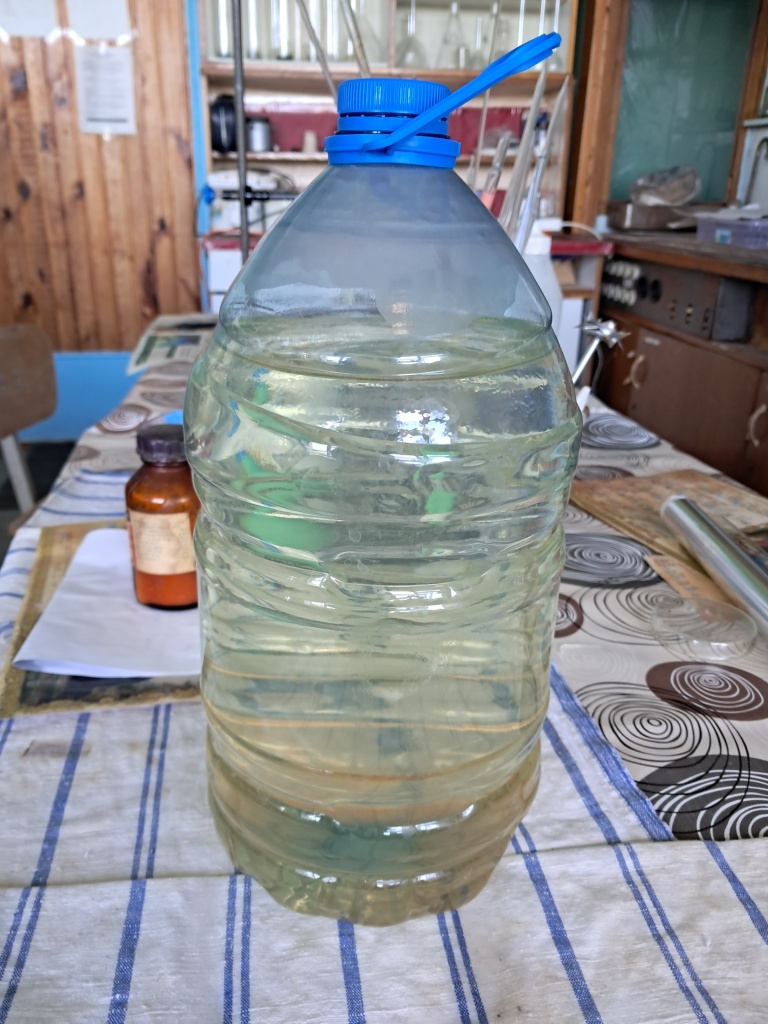 What can be concluded? On some days, the iron concentration in my lab's tap water reaches unacceptably high levels, but this is rare. To film the "purple tea" experiment, I need to wait until the iron content in the water increases sharply. Of course, I can add a few drops of iron (II) chloride or sulfate solution to a bottle of water and then pour the tea into the water, but that would be dishonest. |
|
Having noticed a mistake in the text, allocate it and press Ctrl-Enter
Black tea and iron ion-containing tap water - part 2
So, it is necessary to make a video of the reaction of tea tannins with iron ions dissolved in tap water. However, for several weeks the iron concentration in the laboratory tap water was insufficient: such water did not produce a violet colour with black tea (perhaps a faint violet colour appeared, but it was invisible against the background of the intense yellow colour of the tea).
Черный чай и водопроводная вода, содержащая ионы железа - часть 2 I filled the bottles with the water and left them standing. Over time, the water became brownish: divalent iron dissolved in water was oxidized by oxygen to trivalent and gave a brown suspension of iron (III) hydroxide. However, there was little iron in the water. By the way, the oxidation process of dissolved ferrous iron salts occurs not only in tap water. Its significance is enormous and is not limited to changing the colour of the water in the bottle. The oxidation of ferrous iron by oxygen dramatically impacted the evolution of life on Earth. Ancient oceans were saturated with ferrous iron, which caused the water to have a green colour. Under these conditions, ferrous iron was stable because no oxidising agent could oxidise the huge mass of Fe(II) to Fe(III). The Earth had a reducing atmosphere in those days. At some point in evolution, microorganisms (ancestors of cyanobacteria) appeared that released a substance fatal to many living organisms: oxygen. For these microorganisms themselves, oxygen was also toxic. However, oxygen reacted with divalent iron dissolved in water, converting it into ferric iron. This process led to the formation of iron ore deposits. As ferrous iron and numerous other reducing agents were depleted in the ocean, land, and atmosphere, oxygen began to accumulate, killing almost all life on Earth. Photosynthetic organisms that produced oxygen also died en masse from oxygen toxicity. This event was called the Great Oxidation Event (GOE) or the Oxygen Catastrophe, which occurred about 2-2.5 billion years ago. Organisms that adapted to live in an oxygen-rich environment (aerobic organisms) and those that adapted to avoid oxygen (anaerobic organisms) survived and continued their evolution. The former became the ancestors of multicellular organisms, while the latter almost exclusively remained unicellular. As you can see, rusty water can tell a lot of interesting things. Let's return to tea and tannins. One day I was washing a cup and noticed that the tea again gave an intense violet colour when mixed with tap water. I filled a five-litre jar with water and added some black tea. Instead of a violet colour, I got a brown colour because I added too much tea (a mixture of the yellow colour of the tea and the purple colour of the complex took place). If viewed from a certain angle, the violet colour of the solution was clearly visible, but the experiment was still not visual enough. For comparison, I placed a glass with distilled water next to the jar and added the same tea to the glass. The water in the glass turned yellow. I took a new portion of tap water into a 5-litre jar, this time adding tea diluted with distilled water (which I just used for comparison). This time the violet colour was clearly visible, especially against a white background. I added more tea and the violet colour deepened. |
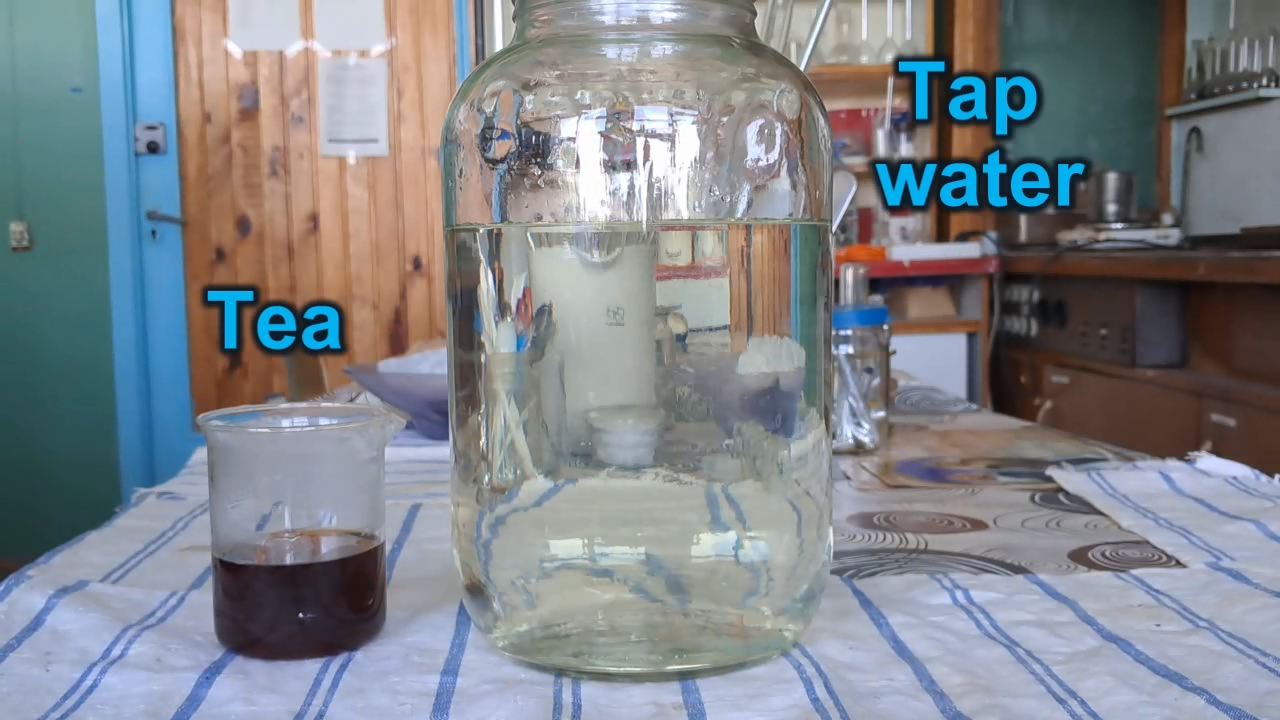
Black tea and iron ion-containing tap water |
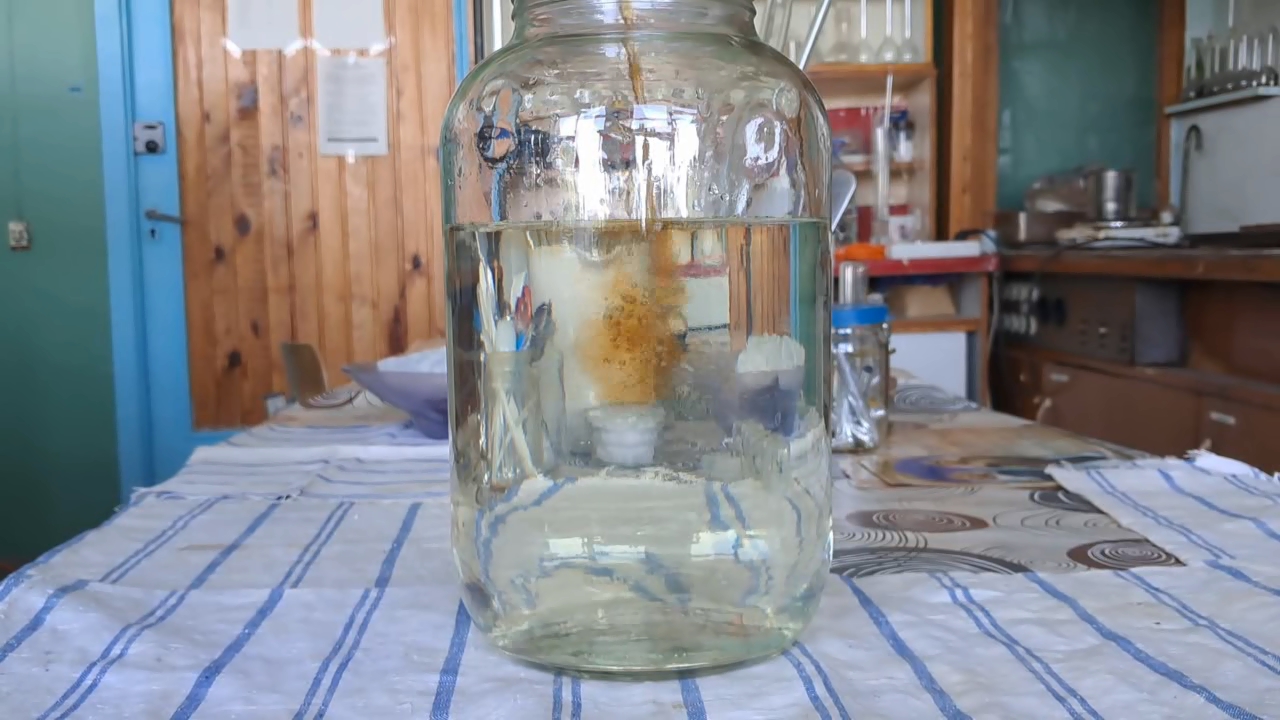
|

|

|
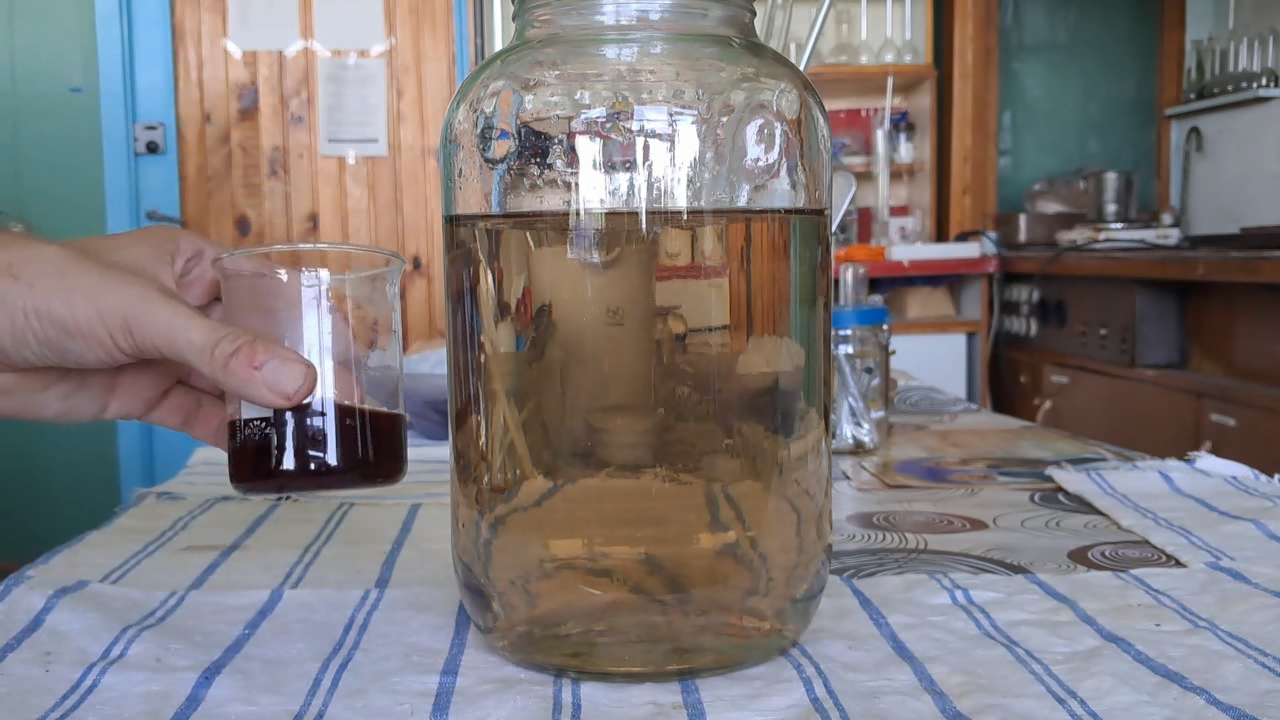
|
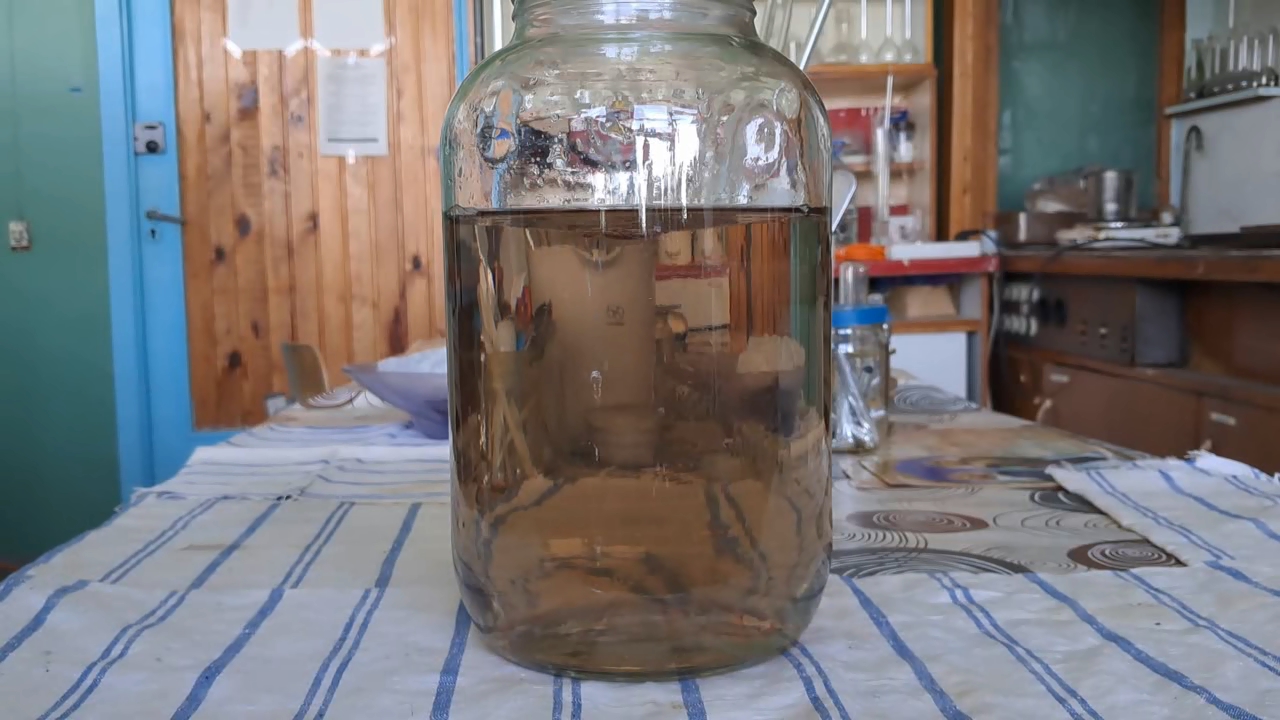
|
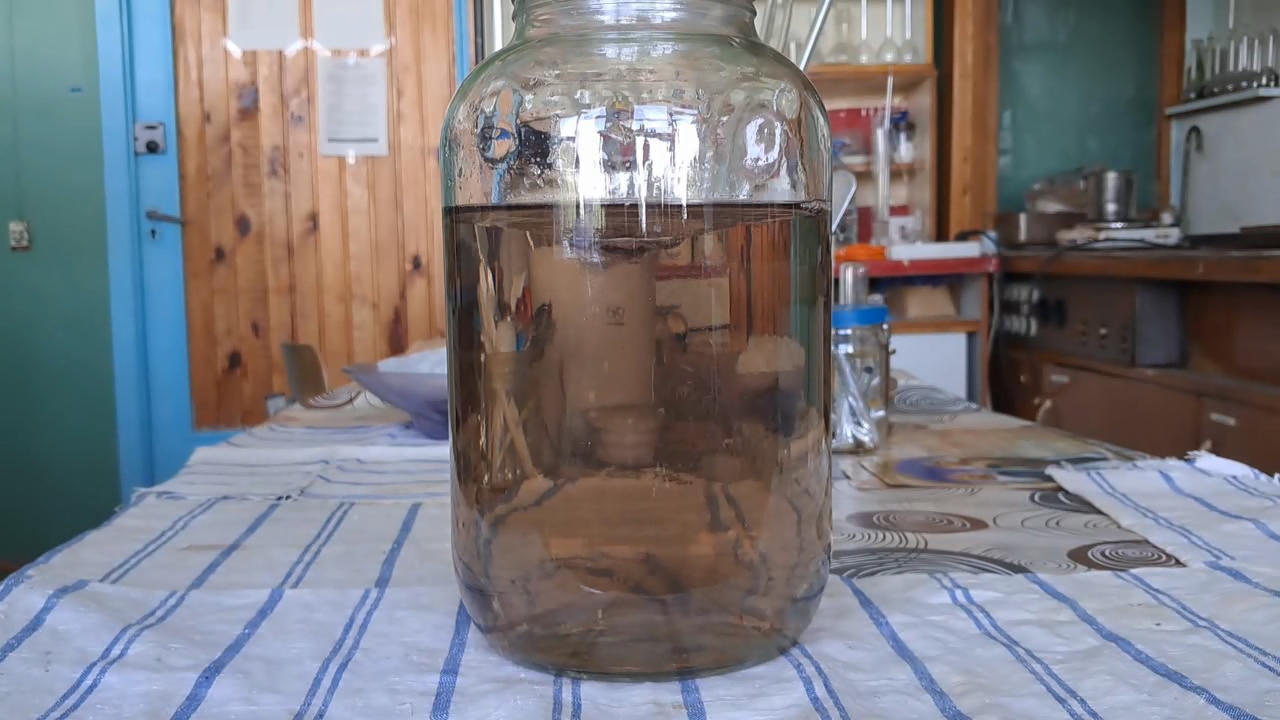
|
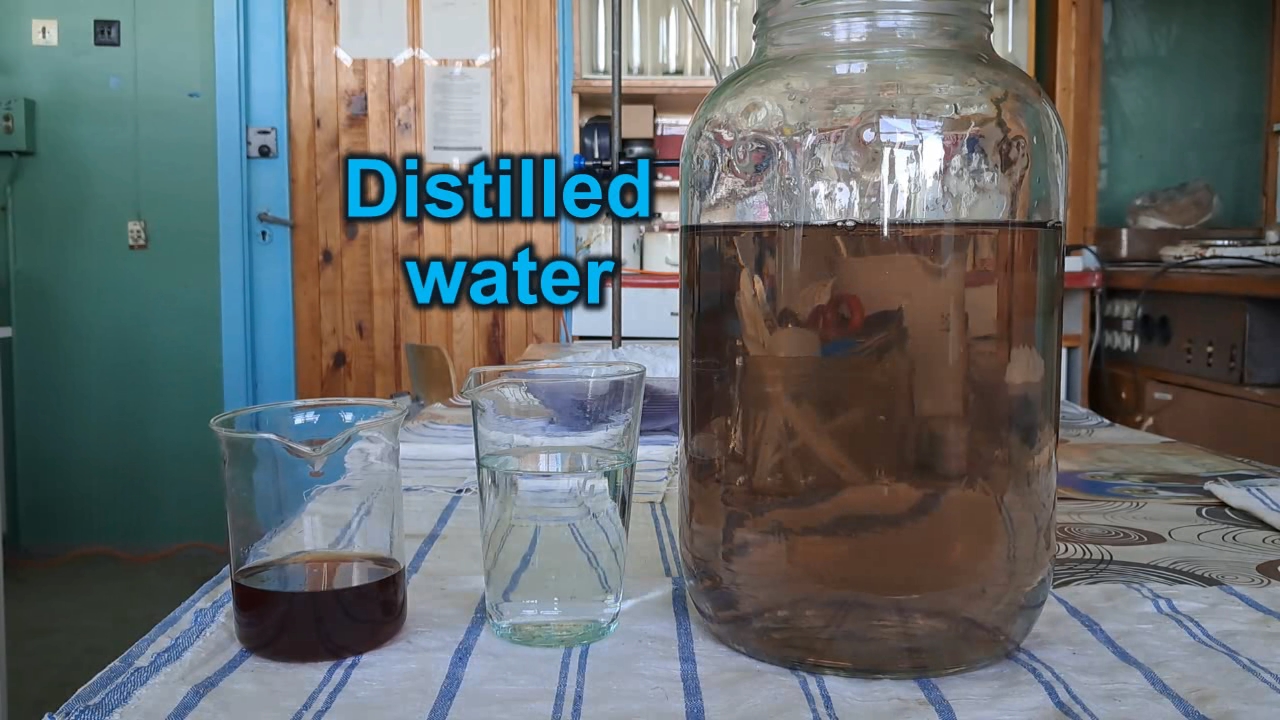
|
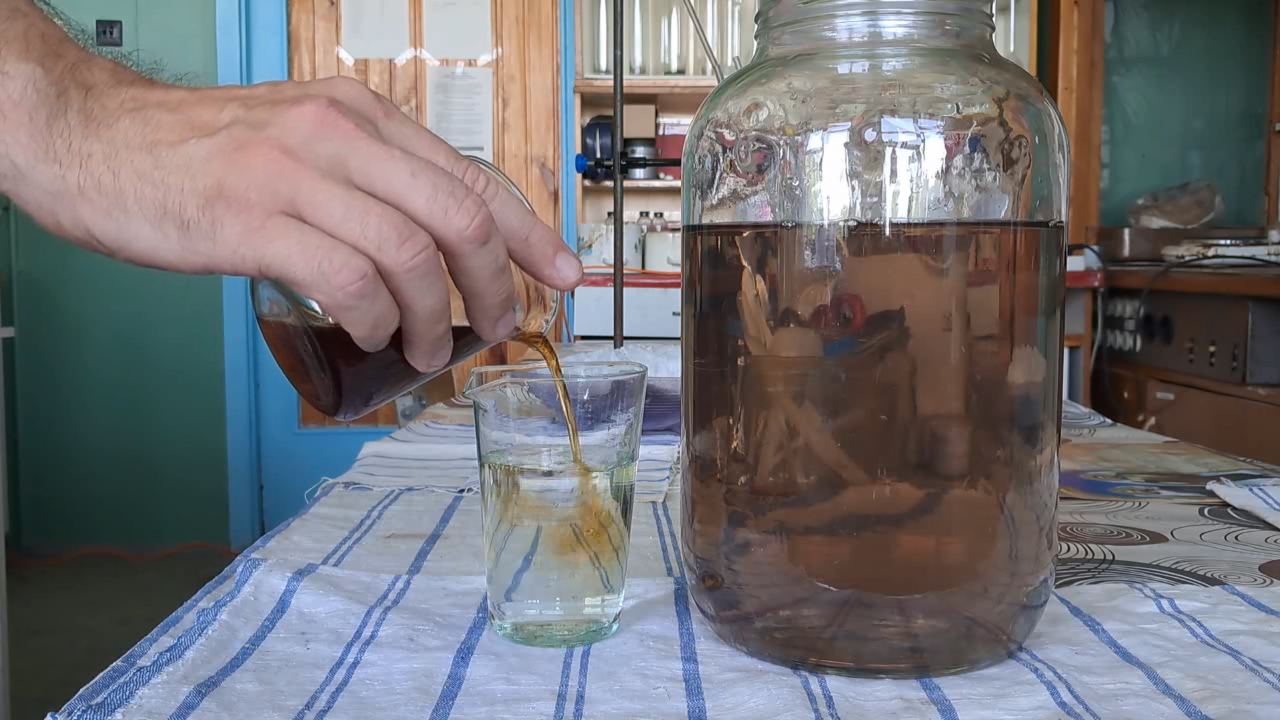
|
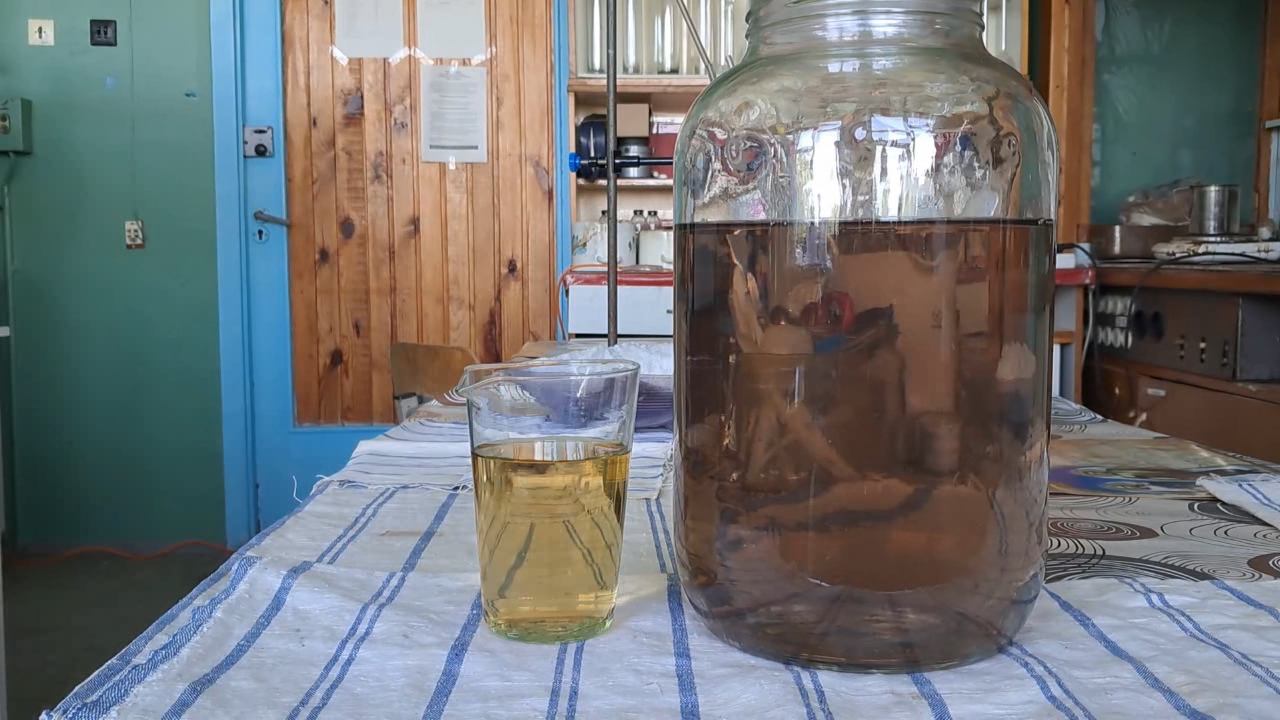
|

|
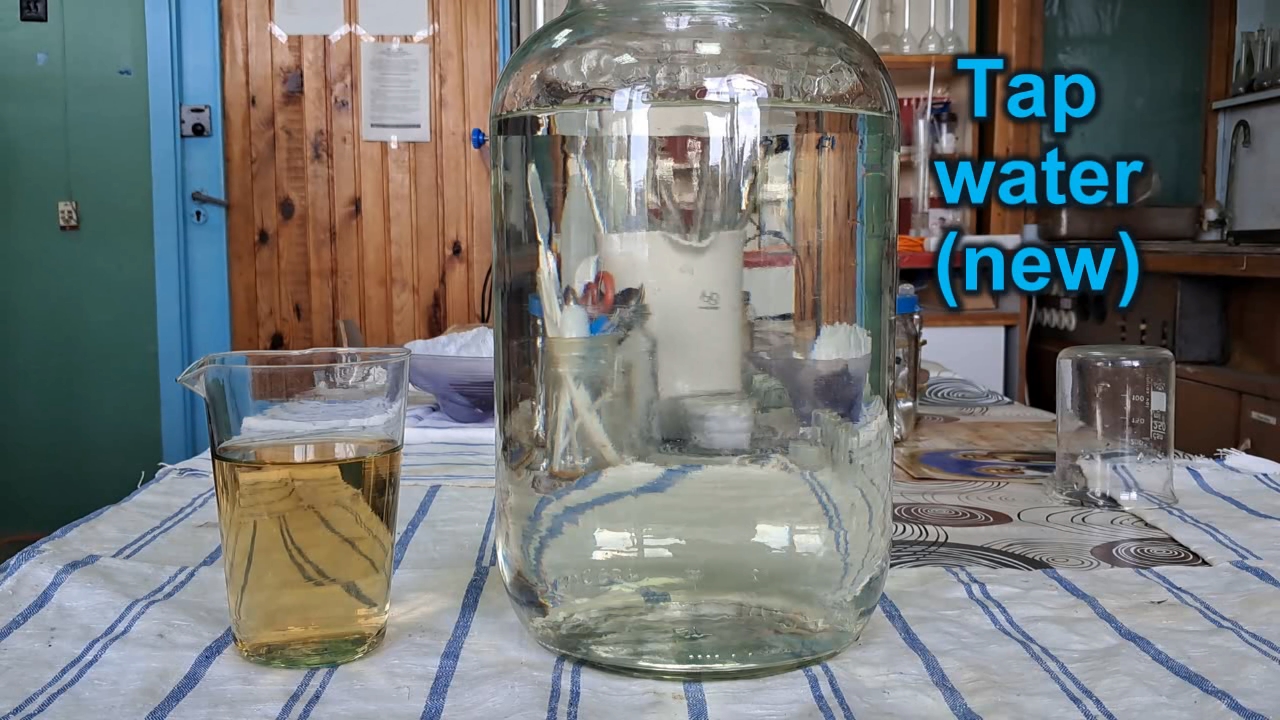
|

|

|
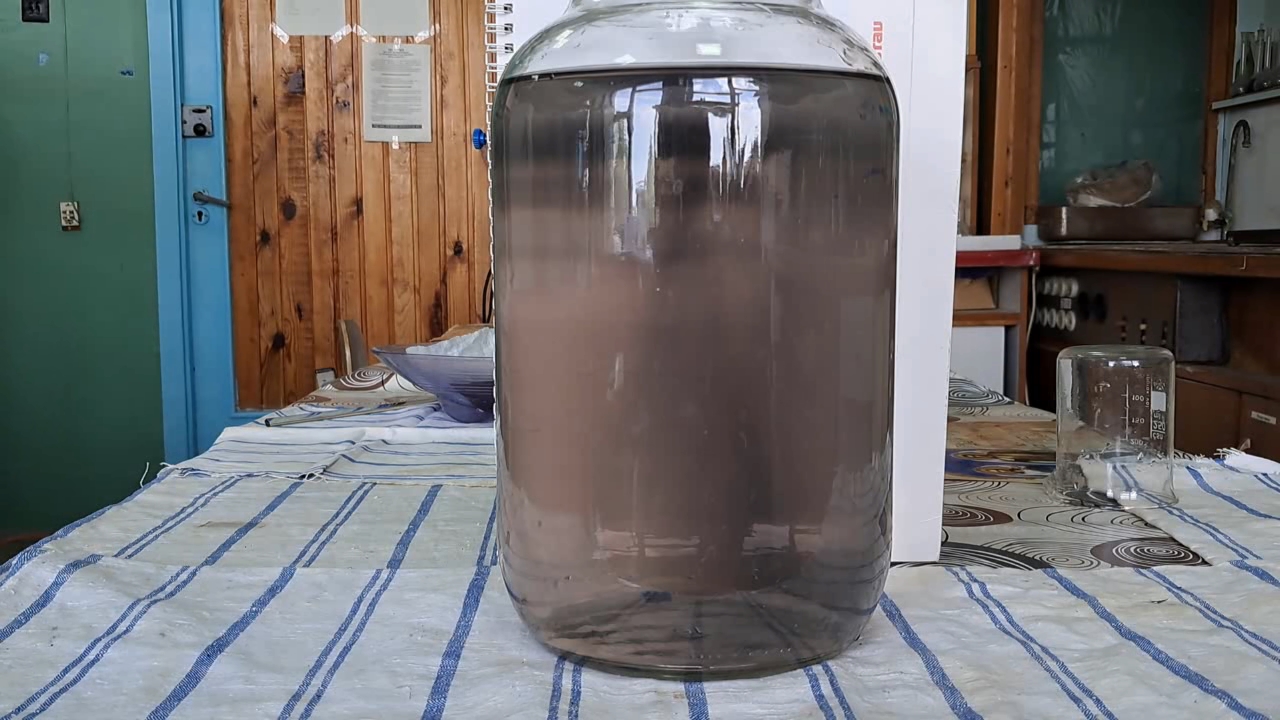
|

|
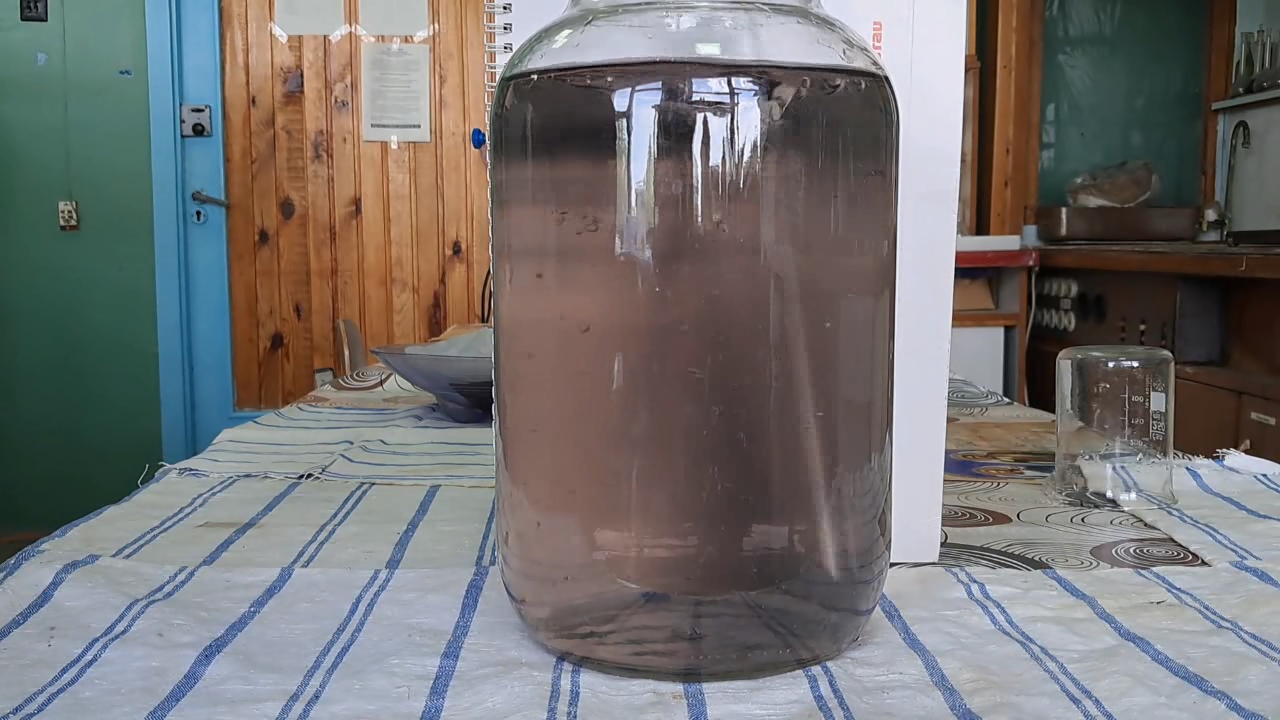
|

|

|

|
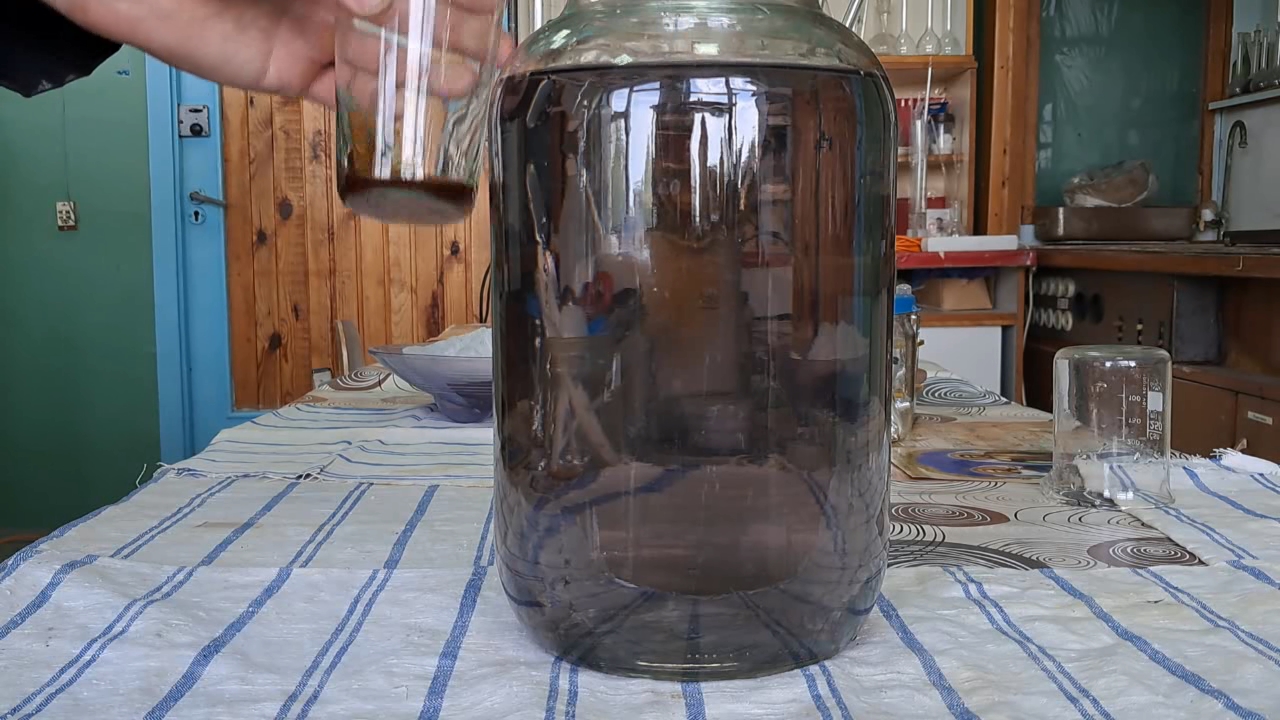
|

|
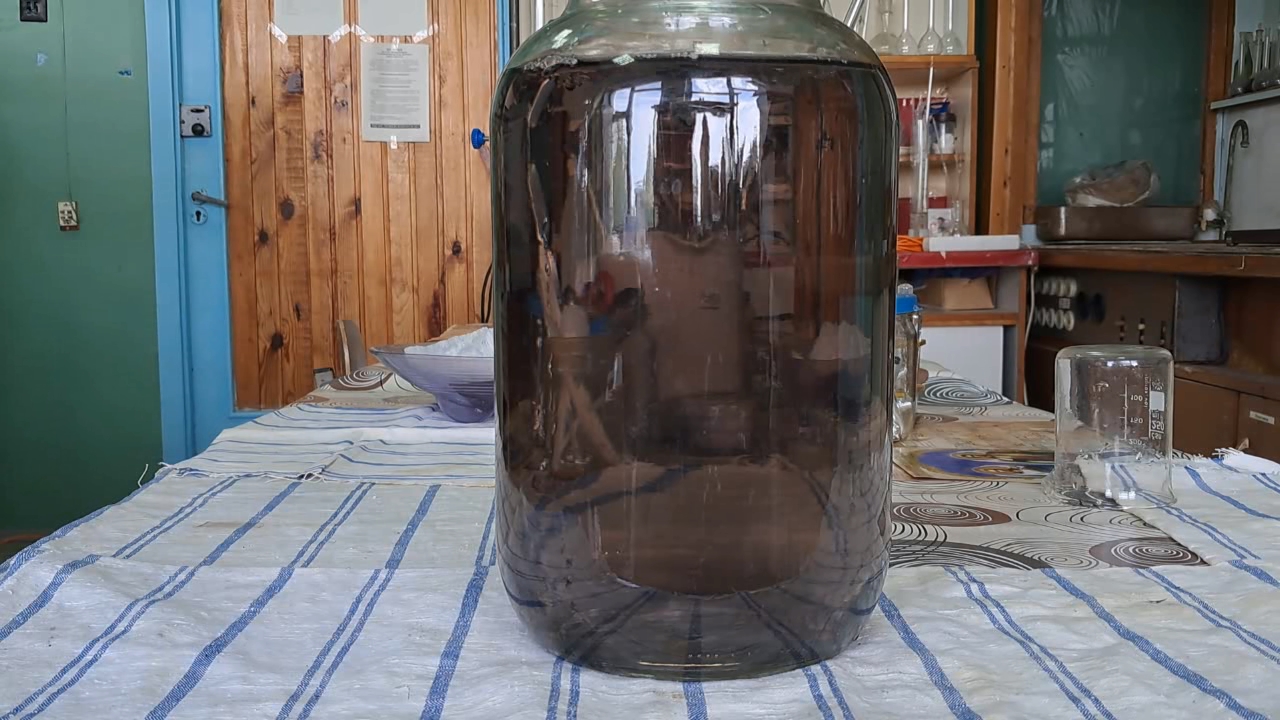
|
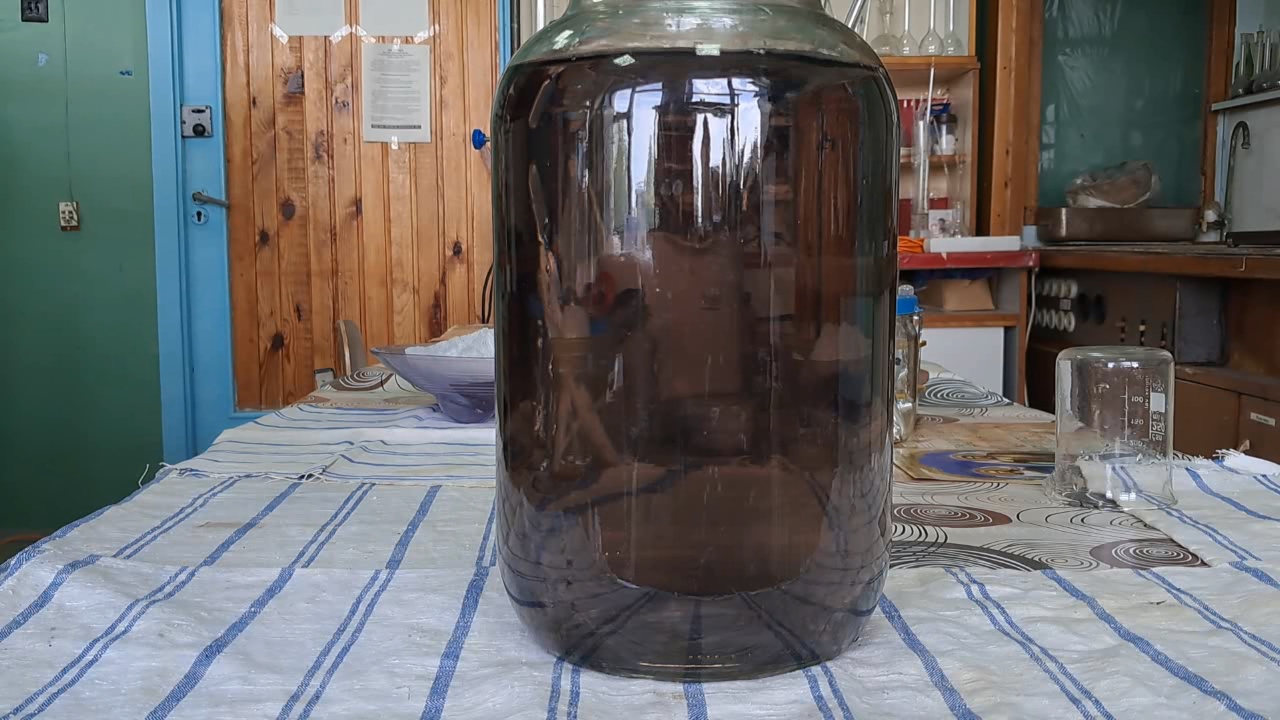
|

|
|
Комментарии
К1
Железо может попадать в воду из водоёма/скважины водозабора, а может из труб. Трубная сталь ещё содержит немало марганца.
К1-1 Еще одна опция - станция водоподготовки. Сульфат или хлорид железа (III) или алюминия (или из смеси) - коагулянт. Если дали мало щелочного реагента (известь, реже - сода), добавленное железо будет в питьевой воде. К1-1-1 В таком количестве всё же не будет, хотя в Америке вот террорист пытался в воду удалённо добавить много щёлочи. |